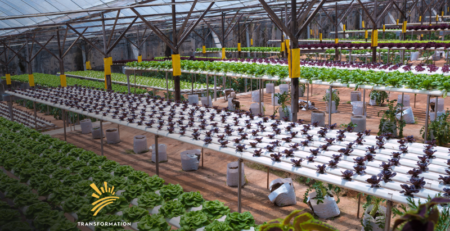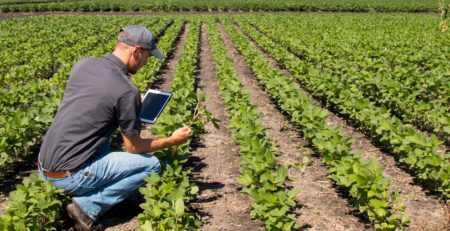Leaf Protein Concentrate: A Path to Plant-Rich Diets
Global population growth and the increased demand for food, livestock feed, and natural resources have caused unprecedented rates of land and freshwater use. Fundamental imbalances within the food system have contributed to climate change and the global decline of food security. Between 2006 and 2017, the food system contributed 23% of all emissions. The majority of these food system emissions are attributed to livestock production, which accounts for a colossal 14.5% of global greenhouse gas emissions.
Furthermore, our agricultural system is ill-equipped to deal with the impacts of climate change. Changing precipitation patterns, the greater frequency of extreme weather events, and average temperature warming will destabilize agricultural crop production and ultimately threaten global food security.
Plant-Rich Diets
Global adoption of plant-rich diets is a demand-side solution to climate change and its detrimental effects. The adoption of plant-rich diets does not require the elimination of animal products but suggests that individuals meet daily protein requirements with primarily plant-based alternatives. If 50-75% of the world’s population transitioned to a plant-rich diet, we would subsequently avoid 64.8-91.5 gigatons of emissions by 2050. This is an extraordinary amount of carbon –– about the weight of 39 billion vehicles!
Leaf Protein Concentrate
Leaf protein concentrate (LPC) is an extremely nutritious food product made by mechanically separating (through a process of juicing, boiling, and drying leaves) indigestible fiber and soluble anti-nutrients from certain fresh green plant leaves. As evidenced by its name, LPC contains extraordinary levels of high-quality protein. On a dry weight basis, which describes the percentage of a nutrient in a substance after removing the moisture, LPC is roughly 50-65% protein with significant amounts of calcium, iron, and vitamin E, as well as other vitamins and minerals. Surprisingly, LPC has a higher dry weight of protein than beef. The expansion of LPC would change the trajectory of the climate change crisis if it largely replaced high emission protein sources, such as beef, in the human diet.
Aside from its potential as a high-quality protein source, the by-products of LPC have other sustainable uses. In agriculture and land management, the residual fiber and liquid whey remaining after protein extraction can serve the following purposes:
- Biomass Energy: reduce land used for fuel needs by 8 million hectares
- Animal Feed: same nutritional value as traditionally unprocessed feed for cows, goats, sheep
- Organic Fertilizer: improves soil fertility, composition, water retention, and crop yields
The production of LPC has the potential to be an important climate solution because of its ability to efficiently produce protein for human consumption as well as useful byproducts for sustainable energy and agriculture. Investment in innovations that are regenerative by design like LPC will only increase in importance as the climate crisis worsens.
Market Expansion and Potential
As our climate situation worsens, and market demand for innovative solutions increase, it will be even more crucial to supply sustainable food alternatives to consumers. LPC has demonstrated success in both small and large scale operations but has not yet taken off in the global market.
On a small scale, LPC production has been used in developing countries to provide food to malnourished populations. In these spaces, LPC demonstrates its ability for easy integration into widely-accepted drinks like lemonade, or in foods like tamales and dried pasta. On a larger scale, companies have expanded LPC as a replacement for soybean meal protein in animal feed. Furthermore, leaf concentrate is relatively easy to make and requires very little training, and therefore is very cost-effective to consumers. To truly produce change, LPC and other innovative climate solutions require expanded financial backing to reach consumers.
Conclusions
Leaf protein concentrate presents an opportunity to produce high quantities of plant-based protein on a small amount of land. LPC yields roughly three times the protein as compared to grain crops per hectare, and five to ten times the protein produced by animal raising per hectare.
Moreover, leaf protein concentrate has the potential to bring a very nutritious, inexpensive, versatile, and sustainable product to market. The expansion of LPC is a crucial solution to sustainably and nutritiously support a growing populations’ need for protein, and investors who participate in this opportunity will be at the forefront of this exciting and innovative change.




Comment (1)
I am Premila L Bordoloi from India and in a college of community science as faculty . I also love doing programme on nutrition related to wellness and illness dietary managements . I also developed products with functional properties from locally available foods which are rich in different nutrients for the wellbeing of the local people .Looking forward for any joint work that can be done with the north eastern part of India.